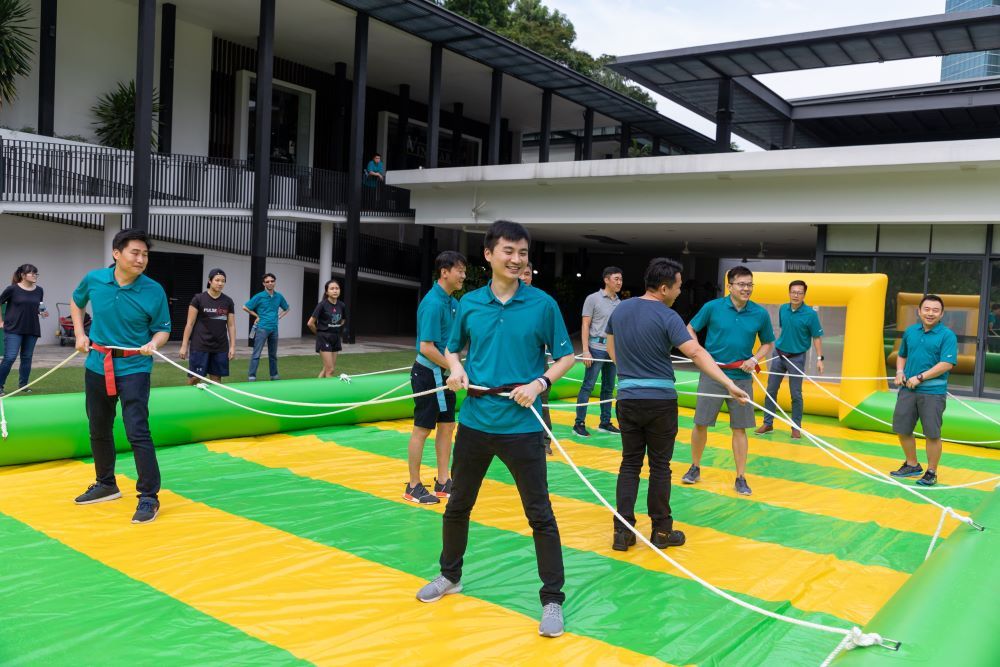Why CSR Programs are increasing in Popularity as a choice for Team Building
Team-building activities are designed to improve collaboration, communication, and overall team cohesion. However, measuring their effectiveness is crucial to ensure that they are achieving their intended goals. Evaluating team-building activities involves a systematic approach that includes setting clear objectives, gathering feedback, and analyzing outcomes. This detailed guide will help you understand how to assess the impact of your team-building initiatives effectively.
Setting Clear Objectives
Identify Specific Goals
Before you can evaluate the effectiveness of a team-building activity, you need to establish clear, measurable objectives. These goals should align with your organization’s broader aims and address specific team needs. Common objectives might include:
- Improving Communication: Enhancing the clarity and effectiveness of team interactions.
- Boosting Morale: Increasing overall job satisfaction and team spirit.
- Encouraging Collaboration: Promoting teamwork and cooperative problem-solving.
- Developing Leadership Skills: Identifying and nurturing potential leaders within the team.
- Enhancing Problem-Solving Abilities: Improving the team’s capability to tackle challenges creatively and efficiently.
SMART Criteria
Ensure that your objectives are SMART (Specific, Measurable, Achievable, Relevant, Time-bound):
- Specific: Clearly define what you want to achieve.
- Measurable: Establish criteria to track progress and measure success.
- Achievable: Set realistic goals that are attainable with the available resources.
- Relevant: Align objectives with broader organizational goals.
- Time-bound: Set a clear timeline for achieving these objectives.
Gathering Feedback
Surveys and Questionnaires
One of the most effective ways to gather feedback is through surveys and questionnaires. These tools can provide quantitative data and qualitative insights into the participants’ experiences. Consider including questions that cover:
- Overall Satisfaction: How satisfied were participants with the activity?
- Relevance: Did the activity align with their job roles and responsibilities?
- Engagement: How engaged were they during the activity?
- Learning Outcomes: What skills or insights did they gain?
- Suggestions for Improvement: What could be done better in future activities?
Interviews and Focus Groups
For more in-depth feedback, conduct interviews or focus groups with participants. These discussions can uncover nuanced insights that surveys might miss. Key questions might include:
- What did you find most valuable about the activity?
- Were there any aspects that you found challenging or unengaging?
- How do you think this activity will impact your work?
Observation
Observing participants during the activity can provide real-time insights into engagement and interaction levels. Pay attention to body language, participation rates, and group dynamics. Note any behaviors that indicate high or low engagement.
Measuring Outcomes
Pre- and Post-Activity Assessments
Conducting assessments before and after the activity can help measure its impact. These assessments can be in the form of surveys, quizzes, or performance metrics. Compare the results to identify any improvements in areas such as:
- Communication Skills: Improved clarity and effectiveness in interactions.
- Team Cohesion: Stronger sense of unity and collaboration.
- Problem-Solving Abilities: Enhanced capability to tackle challenges.
- Leadership Skills: Development of leadership qualities and confidence.
Performance Metrics
Evaluate the impact of the team-building activity on overall team performance. Key performance indicators (KPIs) to consider might include:
- Productivity: Any changes in output or efficiency.
- Quality of Work: Improvements in the quality and accuracy of work.
- Employee Turnover: Changes in staff retention rates.
- Customer Satisfaction: Any impact on customer feedback or satisfaction scores.
Behavioral Changes
Observe any long-term behavioral changes in the team. Look for signs that the lessons learned during the activity are being applied in daily work. This could include:
- Improved Communication: More open and effective communication channels.
- Enhanced Collaboration: Increased instances of teamwork and cooperative problem-solving.
- Greater Initiative: Team members taking more initiative and showing leadership.
Analyzing and Reporting Results
Data Analysis
Analyze the collected data to identify trends and patterns. Use statistical tools to quantify improvements and correlate them with the team-building activity. Look for significant changes in pre- and post-activity assessments and performance metrics.
Qualitative Insights
In addition to quantitative data, qualitative insights from surveys, interviews, and observations are crucial. These insights can provide context to the numbers and help you understand the underlying reasons behind the results.
Reporting
Compile a comprehensive report that includes:
- Summary of Objectives: Restate the goals of the team-building activity.
- Methodology: Describe the methods used to gather and analyze data.
- Findings: Present the results of your analysis, including both quantitative data and qualitative insights.
- Conclusions: Draw conclusions based on the findings, highlighting the impact of the activity on team dynamics and performance.
- Recommendations: Provide actionable recommendations for future team-building activities based on the evaluation.
Continuous Improvement
Feedback Loop
Use the insights gained from the evaluation to continuously improve your team-building initiatives. Implement the recommendations and monitor their impact on subsequent activities. Create a feedback loop where participant feedback informs the design and execution of future events.
Regular Evaluations
Make the evaluation of team-building activities a regular practice. Continuous assessment helps in identifying what works and what doesn’t, allowing you to refine and enhance your approach over time.
Conclusion
Evaluating the effectiveness of team-building activities is essential for ensuring they deliver the desired outcomes. By setting clear objectives, gathering comprehensive feedback, measuring outcomes, and analyzing the results, you can gain valuable insights into the impact of these activities. This systematic approach not only helps in assessing the current effectiveness but also guides the continuous improvement of team-building strategies, leading to a more cohesive, engaged, and high-performing team.
To head back to read another article in our blog, click here.

